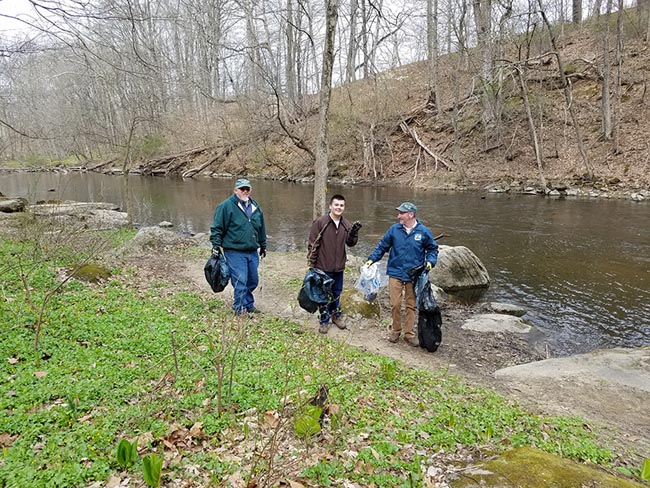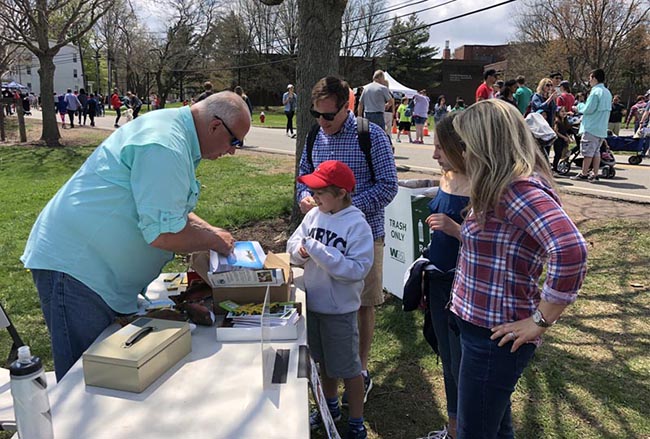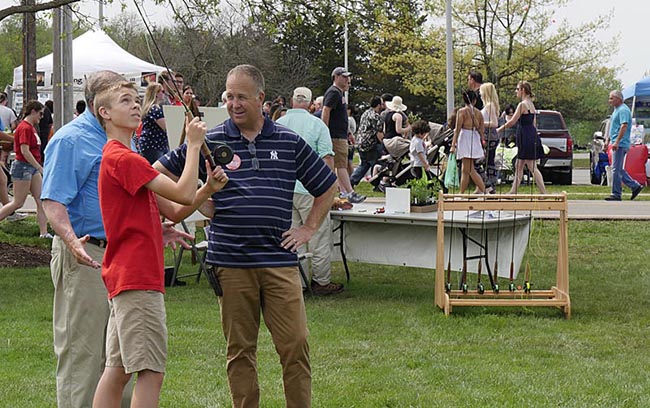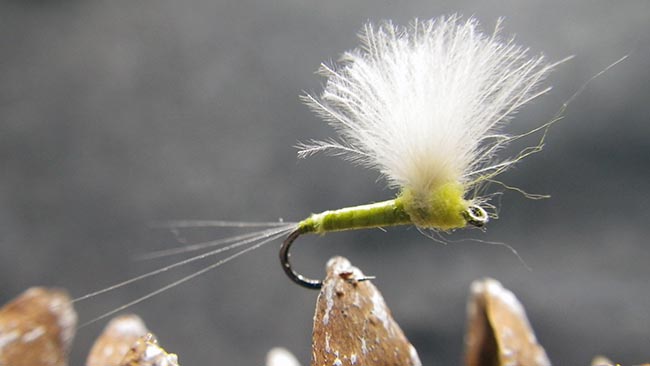


|

|
www.cjtu.org |
April 2022 |
General MeetingDue to the present Covid conditions, this months chapter meetings will be held virtualy on the Zoom platformWe will be having a virtual meeting on Tuesday, April 12th at 8:00 pm. We will be using the platform ZOOM to conduct this meeting. https://us02web.zoom.us/j/86184198571?pwd=ZnNQTkVzMkRiR3djQm1xRUYrWm8vdz09Meeting ID: 861 8419 8571
|
President’s Letter
Hello CJTU Members and Friends! Spring is here Trout season is opening, on April 9th, and the fun is beginning! I imagine that we are all looking forward to getting outdoors more often and doing some fishing. Some of our Board members are intent on setting up fishing trips so that our members can get together, appropriately distanced, and renew relationships. We are excited about some upcoming activities and hope than you will join and support the efforts of CJTU. April 12th - General Meeting We will be having Brian Wimmer as our speaker with an interesting presentation on "Fishing the Provo River" in Utah. This is going to be a beautiful and interesting presentation. April 16th - Annual Musconetcong River Clean-up On Saturday, April 16th, at 9:00am, CJTU will be gathering at Point Mountain for the Annual Musconetcong River Clean-up. Our Board member Dan Calligaro will be leading this effort. Please meet up with other CJTU members for the fun and worthwhile activity. We need Volunteers! Dan can be reached via email at dc8043@bmail.com. April 23rd - NJ DEP's 52nd Anniversary and Earth Day Celebration CJTU has been invited to participate in the 52nd NJDEP Anniversary Celebration at Liberty Stae Park, from 10am to 3pm. We need Volunteers to staff our booth and do some light fly casting instruction, part of the day or the whole day. NJDEP is supplying the table and chairs. I will provide copies of the Council's Newsletter "Trout Watch', Council stickers and pens for giveaways. Please come volunteer and support CJTU and NJDEP. 50+2: 52nd Anniversary and Earth Day Celebration
|
News & EventsSaturday, April 16th, 2022

Once again, CJTU will be participating in a river clean up along the Musconetcong River on April 16 from 9AM - 12 PM. As in the past, we will scour the stretch of the Point Mountain TCA, our home waters, for trash, debris removal, etc. Meet at the Point Mountain bridge near the intersection of Point Mountain Rd and Musconetcong Rd. by 9 AM. The Musconetcong Watershed Association will supply trash bags and gloves, or you can bring your own gloves. Participants will receive a token of appreciation from the MWA. Hope to see you there!
Dan Calligaro Rutger's Day
Rutgers day is back and CJTU is planning on being there! 
This is probably our biggest event of the year with thousands of people attending, giving us an opportunity to present TU's message to an audience we usually don't come in contact with. We need few more volunteers are to help with fly and spin casting and interacting with the public by explaining TU's mission, what CJTU has done for cold water resources in NJ and answering a lot of questions such as "Were can we go fishing?". If you are interested in joining us on April 30th, contact John Wester at johnnwester@gmail.com 
It's time for a new NJ Fishing License and Trout Stamp! You can get it here:https://nj.aspirafocus.com/internetsales If you fish in saltwater you will need to register here:https://www.nj.gov/dep/saltwaterregistry/index.html Help CJTU when you shop at Amazon!
https://smile.amazon.com/ch/23-7355313 Use the link above to access amazon.com and help support CJTUAmazonSmile is a simple way for you to support your favorite charitable organization every time you shop, at no cost to you. AmazonSmile is available at smile.amazon.com on your web browser and can be activated in the Amazon Shopping app for iOS and Android phones. When you shop at AmazonSmile, you’ll find the exact same low prices, vast selection and convenient shopping experience as Amazon.com, with the added benefit that AmazonSmile will donate 0.5% of your eligible purchases to Central Jersey Trout Unlimited. More about amazon SmileFly of the MonthBump Nose CDC ComparadunTied by Bill Ninke
The Comparadun pattern was revealed by Caucci and Nastase in 1975 in their classic book Hatches. It has a split tail, dubbed body and deer hair wing. It has been extremely productive over the years. The pattern is typically tied with the tips of the deer hair pointed forward over the hook eye. The tie in for the hair is one third of the hook shank back from the hook eye. The hair is then pulled back, flared and stabilized in a vertical fan shape with dubbing on both sides of the hair tie in point. A problem with the pattern is that it difficult to tie in small sizes. This problem has been eased by material suppliers picking patches of deer hair with very short tips (marketed as Comparadun hair) that flares easily in short lengths. But it’s still tough to tie in sizes 18 and smaller. With the introduction of soft flexible CDC as a tying material, creative tiers soon learned that small versions of the pattern can be made with a CDC wing. The tying of the CDC versions parallels the tying of the deer hair version in that two or more CDC feathers are tied in tips forward with dubbing then holding them in a vertical fan. These are easier to tie in small sizes and perform as well as deer hair patterns if not better. As an added bonus, CDC comes in fluorescent colors so a bright feather can be mixed with two or more natural colored feathers to make the fly easy to see with old eyes. And they float without added paste. Once you have caught a fish with this pattern, be sure to swish it in the water to remove any fish mucous, blot it dry with a Kleenex, and blow on it. It’s then good to go again. For small patterns, both deer hair and CDC winged, wrapped biots are now generally used instead of dubbing to give a thin segmented body. I find the larger turkey wing biots are easier for me to manipulate but goose biots will work. Patterns, even though effective, evolve. In my April 2019 writeup (“Right Way" Hendrickson Comparadun) , I described an evolution of the original Comparadun pattern where the hair is tied in tips rearward resulting in a more natural silhouette. Further the angle of the wing doesn’t drift forward with use. This month I describe an evolution of the CDC version to get a better thorax and wing silhouette and also keep the wing angle from drifting forward with use. It’s basically the folding technique described in last month writeup. I first saw this technique in a 2015 blog post by a Scottish tier, Jim Lees. I’ve continued to use the prefix Bump Nose since I find it quite descriptive. The specific tying instructions are for a PMD imitation. But, by varying the color of the biot and CDC feathers, patterns for other small mayflies like Sulfurs and Paraleps are easily made. As a retiree with few outside imposed tasks, I spent many hours a few years ago reading blogs and watching videos of flies with CDC wings. If you have the time and desire, you can do the same thing. You’ll learn a lot. But if you have other things to do, just tie and fish various sizes and color variations of this pattern. It works! And change the tail to sparkly yarn if you want a Sparkle Dun variant. If you don’t like CDC, use EP Trigger Point fibers with the same tying steps. These fibers come in several fluorescent colors too. Click here for the recipe! |
Central Jersey Trout Unlimited’s Supporters |